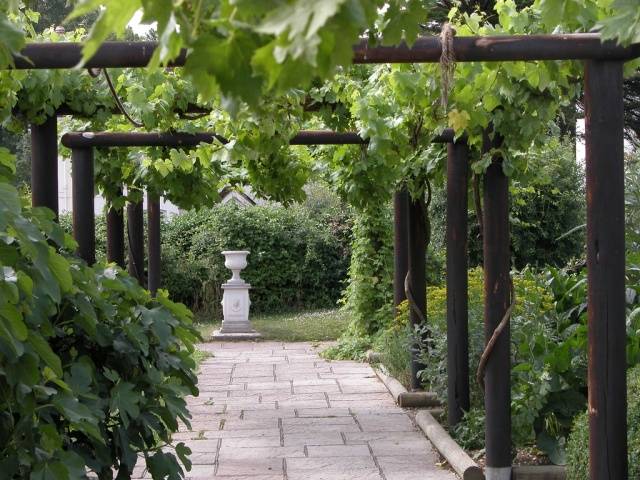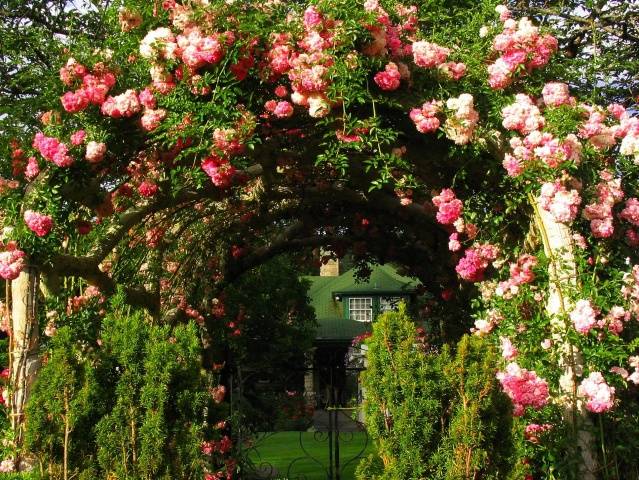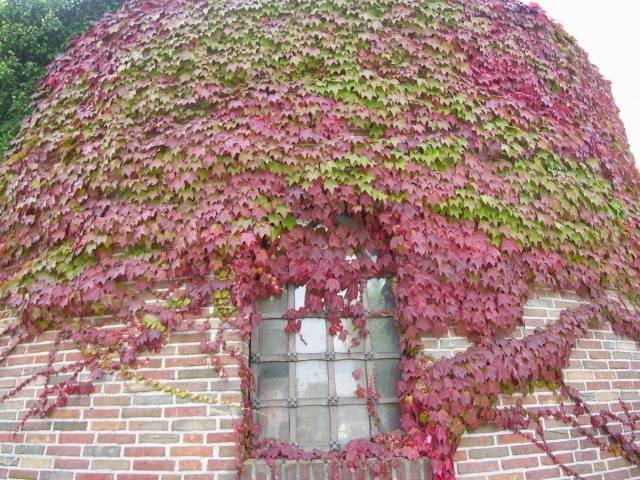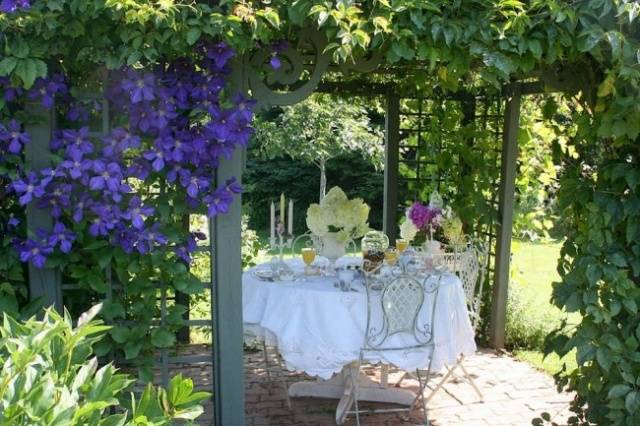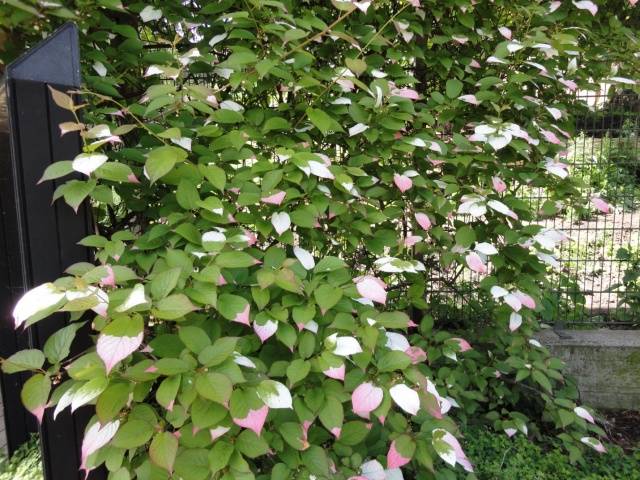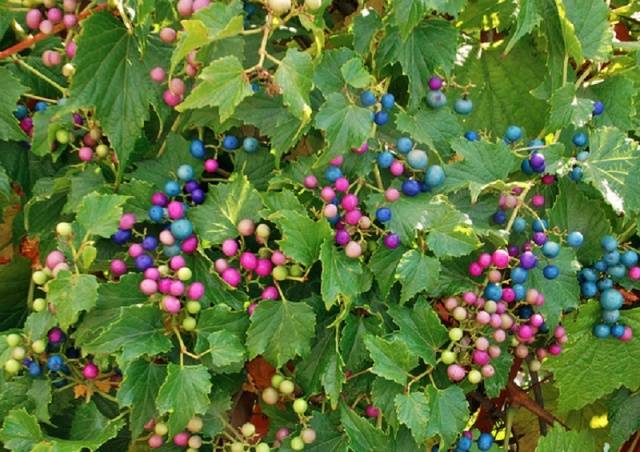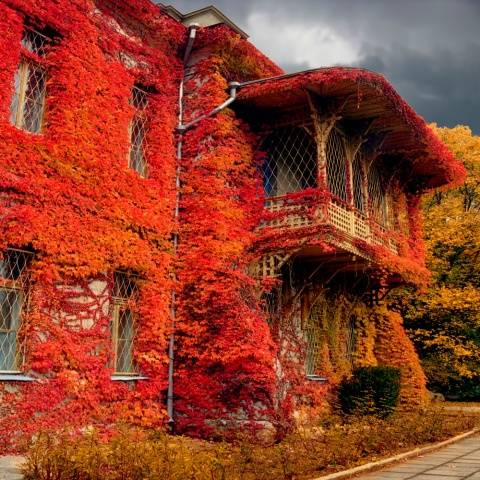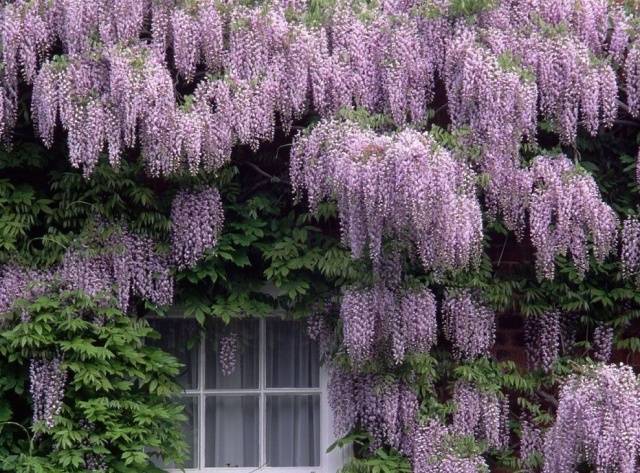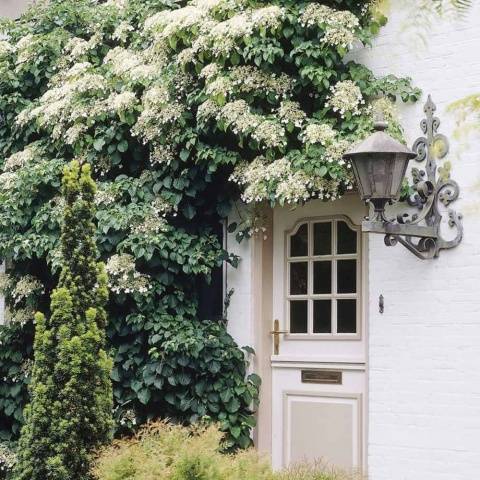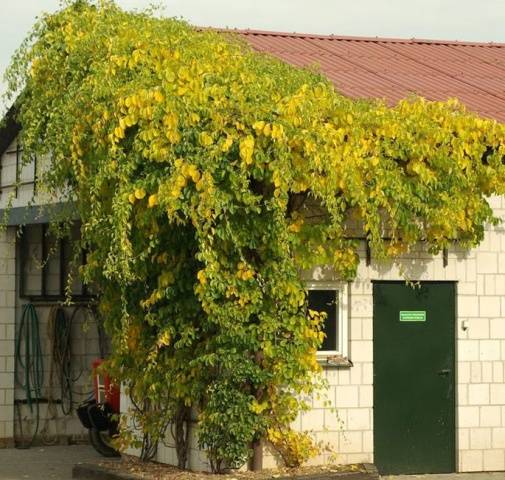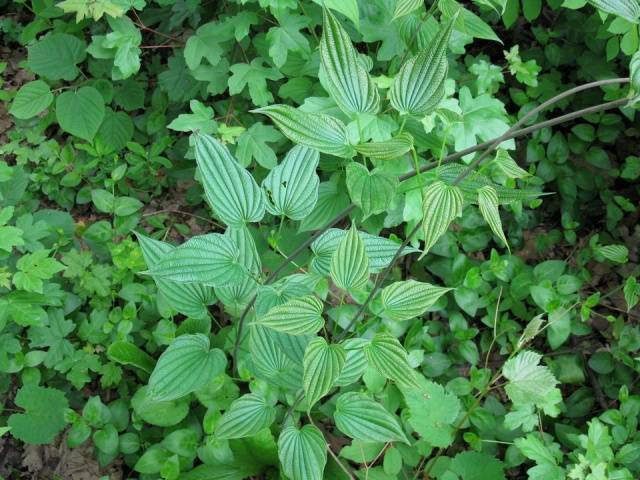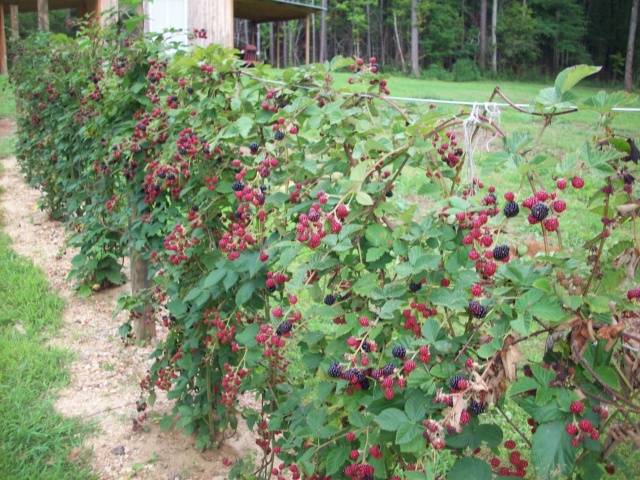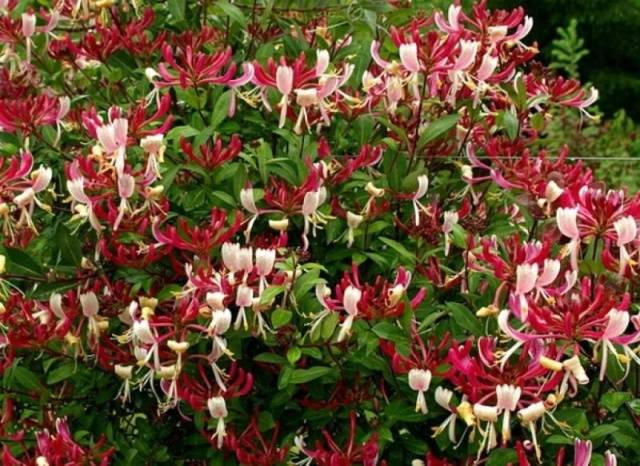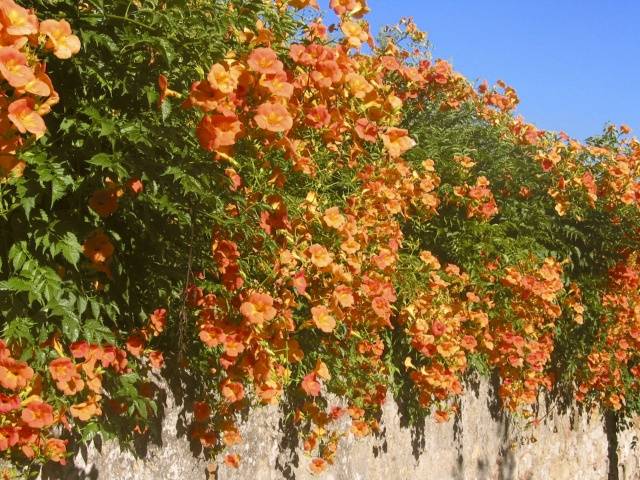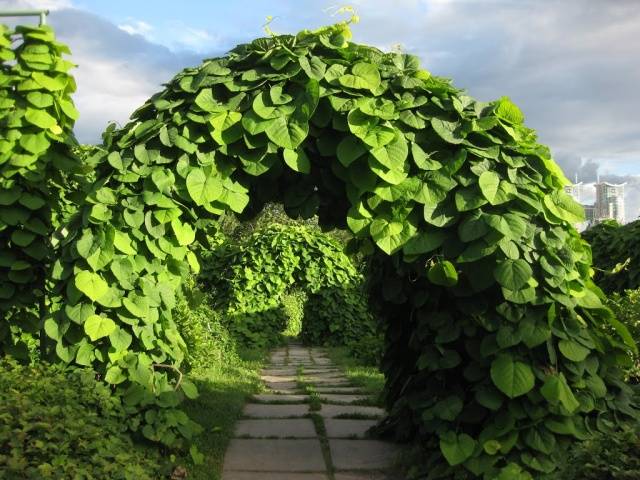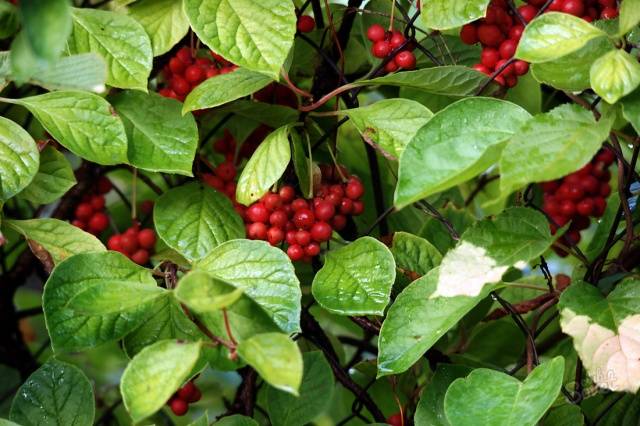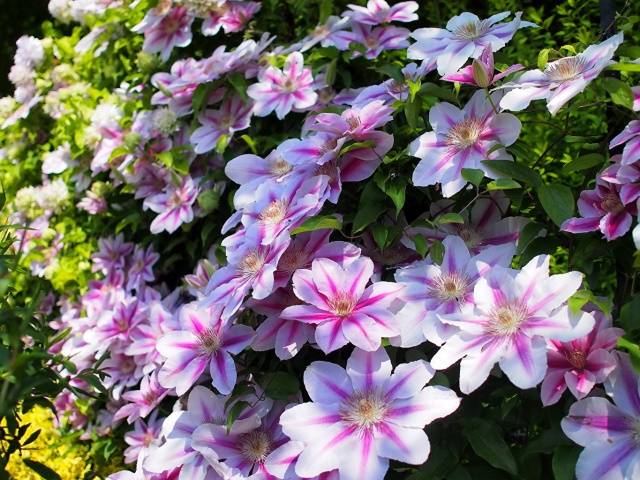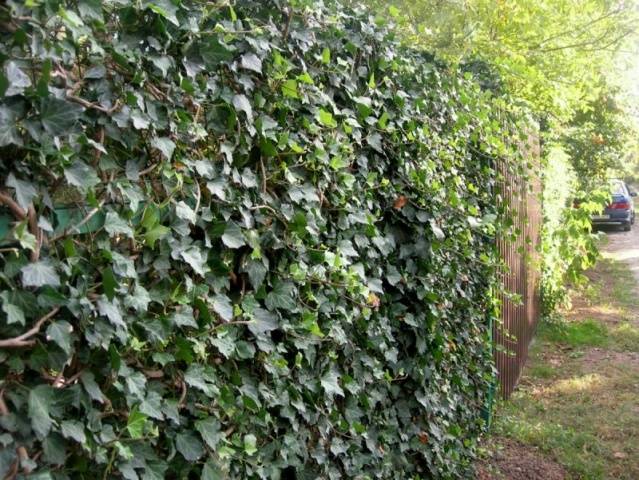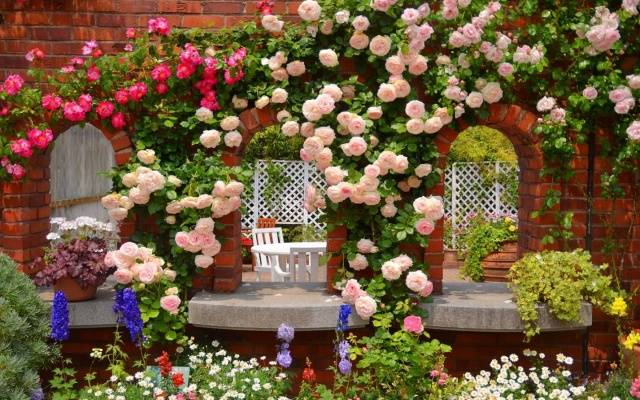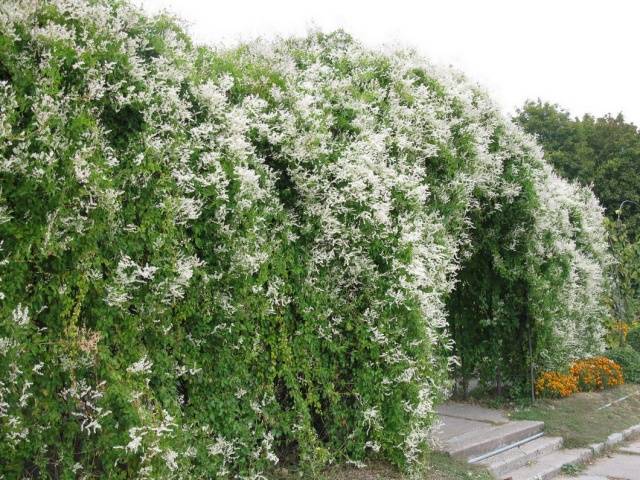Content
The design of any site, even if the most beautiful and expensive plants grow on it, will be unfinished without vertical gardening... Perennial loaches are almost always the material for decorating vertical surfaces. You can build a simple structure yourself and plant climbing plants, or you can, with the help of a highly qualified landscape designer, create an original, attractive composition of climbing vines. Of course, it is better to do this from perennial plants.
Vertical gardening
Before talking about perennial loaches, let's look at their area of application, perhaps it will help someone in creating a unique, favorite corner of the garden or serve as an impetus for the emergence of their own ideas. So, with the help of climbing perennials, we can create:
- Hedge;
- Pergola or trellis;
- Blooming arch;
Or green:
- Facade of the house;
- Hedge or fence;
- The walls of the gazebo.
Classification of perennial loaches
Perennial loaches are usually divided into groups according to the method of attaching them to supports:
- Climbing.
- Clinging with hooks.
- Climbing with antennae.
- Clinging with suction cups.
- Curly.
- Creeping.
Also, plants can be:
- Light-loving;
- Shade-loving;
- They prefer that the root system is shaded, and the stems themselves are exposed to light.
Types of perennial loaches with a photo
Now let's get to know the climbing loaches better, find out their brief characteristics and features, consider the photo. Perhaps this is where the plants you need for your site will be found.
Actinidia
A beautiful and useful plant. The most winter-hardy species:
- Actinidia Kolomikta;
- Actinidia Arguta;
- Actinidia Colosa;
- Actinidia Polygamum.
The plant prefers soils from slightly acidic to slightly alkaline. The landing site should be well lit for most of the day. We need abundant watering. In order for the plant not only to decorate the site, but also to yield a crop, female and male plants are needed. Actinidia is especially good at decorating gazebos, pergolas, trellises. Requires support.
Ampelopsis
Ampelopsis or grapevine is a perennial loach, undeservedly rarely used in landscaping areas. It is very decorative - beautiful medium-sized carved leaves and berries, which on one plant can have different colors. For climbing antennae of a plant, support is needed. Views:
- Japanese;
- Variegated;
- Aconitol is the most decorative;
- Ussuriysky.
It will grow best in partial shade or in a place where the sun shines for only part of the day. Needs good watering and shelter for the winter. The plant is suitable for decorating arches, fences, fences.
Grapes
Cultivated edible grapes can be used for gardening fences, provided they have enough sun to ripen the fruit, for hedges and pergolas. Naturally, they need good support. It is better not to decorate the walls of the house and gazebos with grapes, since sweet berries attract bees and wasps.
The following types of grapes - decorative loaches are very decorative:
- Girly grapes - good to use if you need to braid quickly, for example, in a parking lot;
- Vicha grapes;
- Henry grapes are very decorative, with white-veined leaves;
- Himalayan grapes;
- Thompson grapes.
It is, of course, the most decorative from early spring to stable frosts, but in our conditions, its root does not overwinter. Experienced professionals graft the Vich grape on the root of the Engelmann (maiden) grape. On hand, you can buy either native-rooted Vicha grapes, or an unsuccessful vaccination, they will die in winter.
The use of grapes is universal - these perennial loaches are unpretentious, they look great throughout the year.
Wisteria
One of the most beautifully flowering perennial loaches, it is a powerful vine. Can be grown:
- Floribunda wisteria - remontant (re-flowering);
- Chinese wisteria.
Wisteria needs a sunny, sheltered place from the wind, regular watering. Prefers slightly acidic or neutral soils. Be sure to take care of the support. This liana is thermophilic, but hibernates in the middle lane if it is properly covered.
Hydrangea
Yes, there is a hydrangea that grows like a perennial loach - this is the Pereshkovaya hydrangea. She loves acidic soils, frequent watering, short daylight hours. The plant is remarkable in that it is wind-resistant enough and can be used for zoning even windy areas.
Woodlip
The most decorative species of this perennial loach are:
- Round-leaved woodmouth;
- Climbing Woodmouth;
- Curly wood plier.
Dioscorea
In our conditions, only Dioskorea Caucasian can grow from this numerous species of perennial loaches. Without shelter, it grows only in the southern regions, as it moves north it needs more and more serious shelter. Most often, the aboveground part freezes out, but new lashes grow quickly in an adult plant. Requires a sunny place, moderate watering. This liana is very beautiful in decorating outdoor stairs.
Blackberry
It is best to decorate the perimeter of the site with blackberries. Its root needs to be shaded or well mulched, and its prickly shoots need a lot of sun. Good:
- Blackberry Sizay;
- Blackberry Shrub;
- Blackberry Cut-leaved.
Honeysuckle
Many species of this ornamental plant are ornamental loaches:
- Honeysuckle Honeysuckle;
- Brown's Honeysuckle;
- Curly Honeysuckle;
- Honeysuckle offspring;
- Sizay's honeysuckle;
- Honeysuckle Rough;
- Honeysuckle Tuscany;
- Honeysuckle Constant flowering;
- Thälmann's honeysuckle;
- Honeysuckle Hecrotta;
- Honeysuckle Evergreen;
- Japanese honeysuckle.
The last two types are the most capricious, they can freeze slightly. Honeysuckle does not like clay soils, loams, prefers humus-rich soil and abundant watering.
Campsis
Campsis or tekoma is a very stable, unpretentious perennial loach. Of course, it is beautiful, but it is more suitable for outdoor gardening of areas, as it is an aggressor.
Kirkazon
Kirkazon or aristolochia is a perennial loach, one of the best for landscaping large horizontal surfaces. Views:
- Kirkazon Large-leaved;
- Kirkazon Manchzhursky;
- Kirkazon the Ordinary;
- Kirkazon Graceful.
Surprisingly unpretentious ornamental plant. It tolerates high air pollution, winter and drought resistant. All species, except for Kirkazon the Graceful, are well tolerated shadow and partial shade. The only thing they can't stand is drafts. And not because they can die, but because the wind tears the huge leaves of the plant.
Schisandra
Schisandra is a highly decorative, medicinal perennial loach. He loves that the earthen ball is protected from the sun, and the branches are well lit.We need abundant watering.
Lomonosov
Clematis or Clematis are one of the most decorative flowering perennial loaches. There are many types of clematis, even more varieties and hybrids. It is truly a favorite plant of breeders and landscape designers. Used everywhere in vertical gardening. You need a thin support. We will not list the species and varieties here - there are too many of them.
Ivy
Two types of winter will be best:
- Heder's ivy;
- Ivy.
Roses
Climbing roses can hardly be called a perennial loach. But no story about climbing plants would be complete without mentioning them. The support for roses must be strong and must be attached by hand. But the effort spent is worth it to have a pink arch, pergola or trellis on the site.
Fallopia
Fallopia or buckwheat is exactly that flowering perennial loach that quickly braids a large area.
General tips for growing perennial loaches
- Choose the plant carefully according to the planting site (light-shadow).
- Most perennial loaches prefer to grow in fertile, slightly acidic soil in a sunny, wind-protected place.
- Do not plant the plant close to a fence or wall - there is always dry soil. You must step back at least 50 cm.
- Supports are placed before planting the plant. They must be strong enough to withstand the weight of the plant in strong winds or snow.
- The plant will be beautiful only if it forms a perennial loach from the first day of planting.
- To maintain a decorative appearance and prolong flowering, you need to cut off wilted inflorescences and damaged and diseased growth in time.
We have described far from all perennial loaches. How and where to use them depends only on your imagination and the capabilities of your site.

